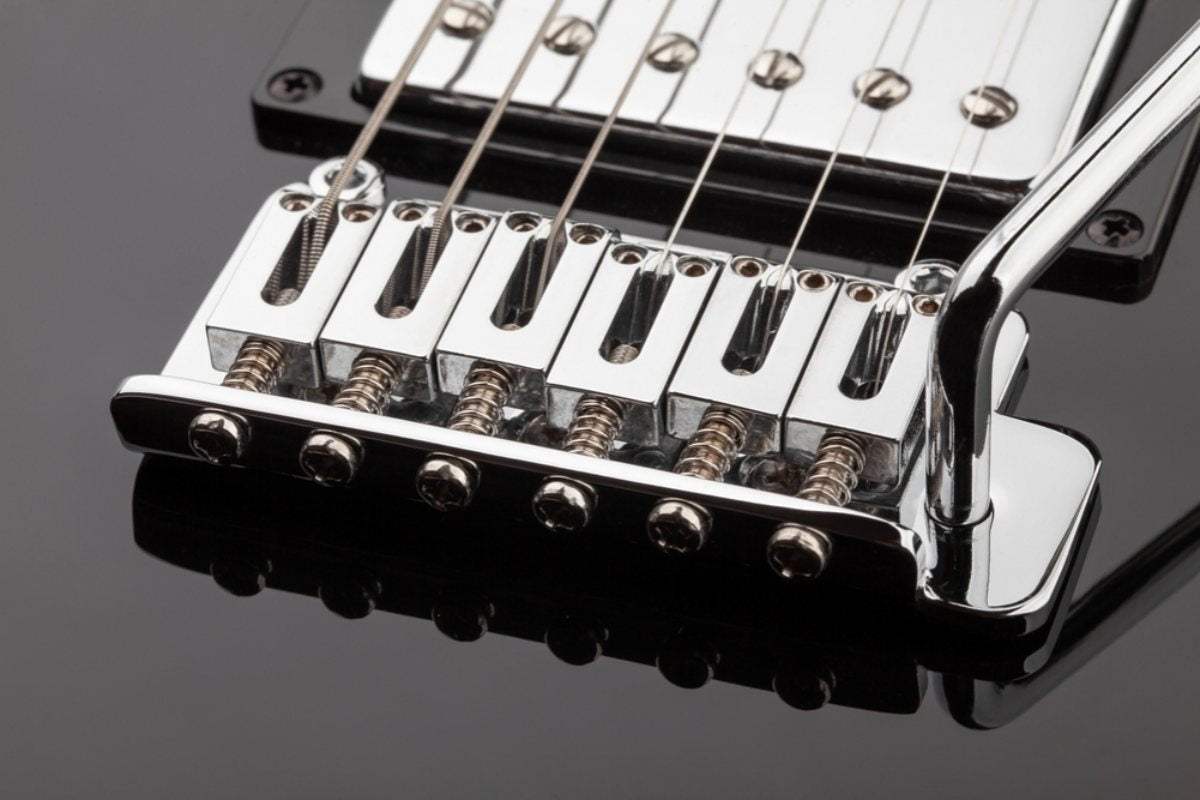Headless guitars have been around since the ‘80s. Moreover, they are, perhaps, a very symbolic element of that very strange era of guitar building. Yes, while in the days of hair metal some were rocking spandex and Graffiti Yellow pointy super Strats, others were playing the avant-garde of guitar building, headless guitars.
I’m sure you’ve seen them around more than once and had the same questions I had. How do they work? Where do I put the strings? Are they comfortable? Are they lighter? How are headless guitars tuned?
Well, all those doubts have come to an end in this very post because I’m about to quench your thirst for knowledge about headless guitars.
Let’s do this!
How Do Headless Guitars Work?
The first time I was handed a headless electric guitar I flipped it over several times before sitting it on my lap. I was almost tempted to ask the clerk for a manual entitled “How do headless guitars work for beginners”. For example, I wondered about something as basic as how to tune a headless guitar.
The salesman was very kind and he showed me everything about it after plugging it in. To be honest, that was a very bad experience because it had been forgotten condemned to oblivion, dusty, with dead strings, and kind of unplayable.
That said, later in life I was able to get hold of a good one and my opinion changed completely. Let me tell you what sold me to them.
Strings, Re-Stringing, and Tremolos
Before answering that initial question “How do you tune a headless guitar?”, let me tell you how you string and re-string a headless guitar (with and without a tremolo).
- You have to loosen the bolt that works as a guitar tuner at the bottom of your instrument. That will reveal the ball end of the string so you can remove it.
- Loosen the bolt with the (usually provided) Allen wrench at the opposite end of the guitar. That will allow you to remove the string from the guitar completely.
- Put the new string through the saddle and lock it with the same bolt used to tune it. Make sure you lock it in before you stretch it toward the non-existent headstock.
- Stretch the string to its final position and tighten it up with the bolt. Then, cut the excess of string on the other side of the bolt.
- Fine-tune your guitar to the desired pitch using the tuners at the bottom.
If your guitar has a tremolo, you should lock it with something before you re-string the guitar to avoid scratching your guitar. It might fall back, and the tuners can scratch your guitar’s finish.
A Tale of Allen Wrenches
Every headless bass or guitar will come with an Allen wrench. Yes, I know what you’re thinking, the ‘80s were the absolute mecca of Allen wrenches. I remember securing them behind the headstock in my Ibanez RG and then losing them from jumping around on stage.
Well, headless guitars need the wrench for string changing. I mean this. If you don’t have it and you break a string, you’ll be left with an unusable, beautiful guitar.
So, as a tip from someone who’s been there and had to go through a very serious band meeting for it, please take several spares to every gig.
An Overhead-Compartment Guitar
A Steinberger guitar will not only look impossibly cool on your shoulder, but it can also fit inside the overhead compartment of an airplane. I’ve traveled to one too many countries with my Baby Taylor which is the perfect size for the plane. Yet, sometimes, I’ve had some rough times with the airline with it.
Recently, I had to dispatch it and I feared for my guitar because of its hollow body and its headstock.
Well, although it’s an overhead compartment-friendly guitar, even if you must ship it in the hold, there’s no headstock to break.
Some Benefits of Headless Guitars
We’re not making a headless guitars’ pros and cons section here; I’m just going to tell you some advantages of headless guitars.
Say Goodbye to Neck Diving
Just like there’s nowhere to clip on a headless guitar tuner, there’s an even distribution of the guitar’s weight because there’s no headstock full of heavy tuning pegs. If you’ve ever played an SG, you’ll know what I mean. Well, you can say goodbye to that problem with a headless guitar.
Open Strings Sound Just Like Fretted Notes
With a regular guitar bearing a headstock, open and fretted strings usually sound different. I know what you’re thinking, but don’t look at me like that, it’s a minor, but true sound difference. The thing is that open strings ring through the nut (usually plastic or bone), and fretted notes ring through metal. With headless guitars, since there’s no nut but a zero fret, all sounds the same.
Consistency is a constant when describing headless guitars.
Lightning-Fast String Changes
Allan Holdsworth plays a headless jazz guitar, and his roadie can probably jump on stage to bring him an identical replacement when he breaks a string. Same with Sting and his roadie bringing him another headless bass guitar (Steinberger, of course).
Still, most of us just need to change that string and continue playing. Well, as you’ve seen above, it’s quite easy to change one. There’s no infinite turning around a metal pole.
Oh, and please buy and install a rubber string retainer for headless guitar to avoid unfortunate accidents with that broken string.
Can I Have One Made?
An original can be an expensive instrument for an experiment. Can you have a Steinberger-style headless guitar clone made? Are there headless guitar neck replacement options, second-hand headless guitar kits, or any other guitar parts (headless)?
Well, the answer is yes. You can buy a 6-string headless guitar bridge (or a headless bass guitar bridge) and finally finish that short-scale headless guitar project you’ve been dreaming of.
The Bottom End
Headless guitars were a great discovery in my life. I will never forget the time we were playing an out-of-town gig and the SG my bandmate was playing arrived with a broken headstock. That was my first approach to a headstock instrument and the results made me gig, record, and do some couch songwriting with it as well.
If you haven’t yet, get over that visual prejudice and try one (or have one made). You already have? Let me know your thoughts in the comments!
Happy (headless) playing!
If you like this article, please share it!
Be sure to join our FB Group Guyker Guitar Parts & Accessories Community to share your ideas! You can also have connections with like-minded guitar players, Guyker updates as well as discounts information from our FB Group.





